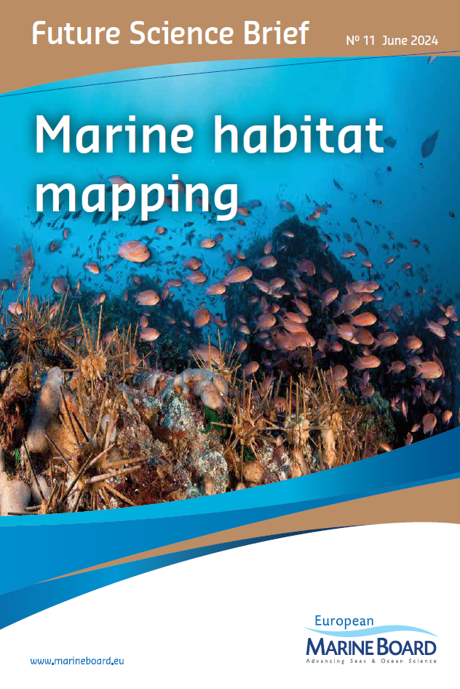Accurate and extensive marine habitat maps are fundamental to support a wide variety of marine policies and ambitions including the EU Marine Strategy Framework Directive and policies to deliver the ambitious plans of the European Green Deal. However, large areas remain unmapped, and current maps predominantly focus on physical aspects of marine habitats and lack sufficient biological resolution, such as species and communities. Higher resolution maps are needed to better represent the linkages between the seabed and water column in three-dimensions and to enable an ecosystem approach that considers the marine environment in the “fourth dimension” of time. In addition, there is a need for better standards for mapping and strengthened coordination of mapping efforts. EMB Future Science Brief No. 11 ‘Marine habitat mapping’ presents science and policy needs and recommendations to advance next-generation marine habitat mapping.

The document highlights current methods and future trends in the acquisition of data from the seabed and water column via remote sensing and direct, in situ techniques. It discusses combining data to produce maps using modelling approaches and presents recommendations for adopting fit-for-purpose habitat classification schemes. It also provides an overview of what has been mapped and where within the European sea-basins, highlights the need to increase the quality and resolution of marine habitat maps. It identifies critical gaps in habitat types and geographic extent, including the coastal areas, the deep sea, Natura 2000 sites and other Marine Protected Areas across all regional seas. Finally, it describes the need to improve the assessment and communication of uncertainty and confidence in maps, and to make maps more easily accessible to a variety of stakeholders to increase their value for end-users and to the public for Ocean literacy.
Find out more about the Future Science Brief and download here.